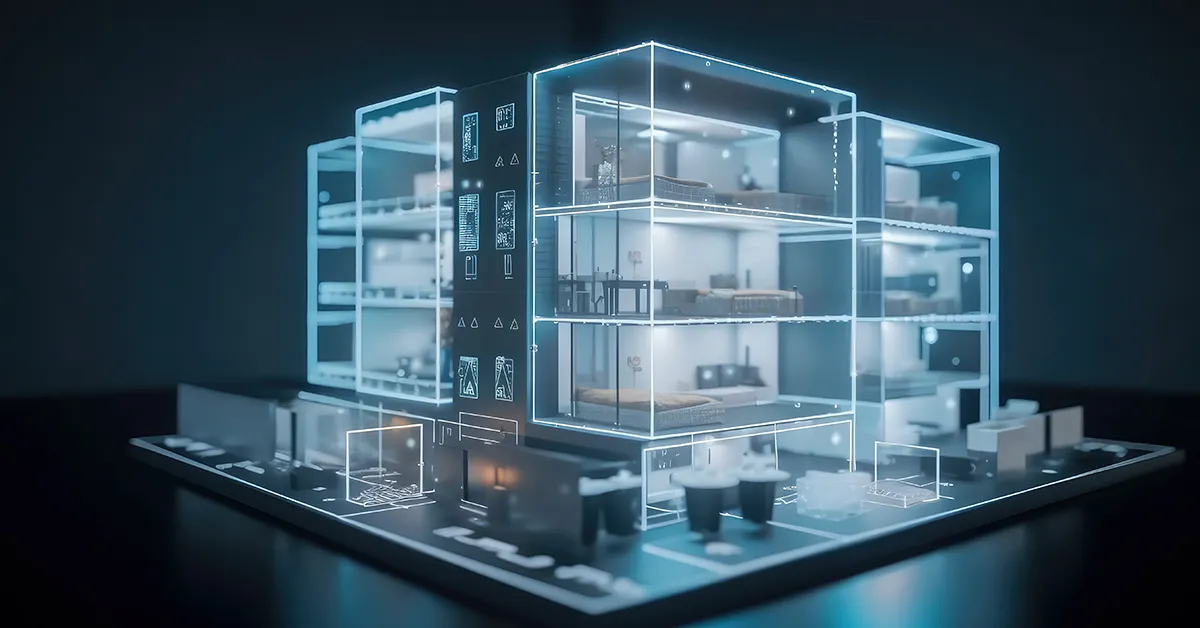

Fiber optic cables offer several advantages for data transmission, including high bandwidth capacity, low signal loss over long distances, and immunity to electromagnetic interference. These cables use light to transmit data, allowing for faster speeds and more reliable connections compared to traditional copper cables. Additionally, fiber optic cables are more secure as they are difficult to tap into without detection, making them ideal for sensitive data transmission.
MDU Internet Infrastructure Used Currently For Commercial Applications in 2024
The deployment of fiber optic cables differs from traditional copper cables in several ways. Fiber optic cables are thinner and lighter, making them easier to install in various environments. They also require specialized equipment and training for installation and maintenance. Unlike copper cables, fiber optic cables do not conduct electricity, reducing the risk of electrical hazards during deployment.
Multi-dwelling unit (MDU) residents no longer just expect a roof over their heads; they demand a reliable connected existence. Connectivity is key. The internet isnot only an indispensable utility, but one that MDU residents expect property owners to provide. This post explores why a reliable internet service is crucial for property management and the potential consequences of dead spots, slow speeds, and internet downtime.

Posted by on 2024-02-07
Smart apartment buildings, equipped with cutting-edge technology and automation systems, are becoming the new standard in property management. In this comprehensive guide, we will explore the concept of smart apartment buildings, the benefits they offer to owners and tenants, how to build or upgrade to one, the key features and technologies involved, and the steps to plan and implement a smart apartment building strategy.

Posted by on 2023-09-25
Touched by your residents more than their lights or hot water, the Internet has become a required utility, and managed WiFi is the perfect way to deliver the utility to your tenants. Tenants believe that the Internet should just work—no questions asked, no matter where they are in your building or on your property. You want happy tenants, and you recognize the competitive advantage and potential income that managed WiFi offers. You also know that installing managed WiFi can require a substantial capital investment, so you need to do it right the first time, with a vendor you can trust and rely on. But how do you find the best vendor? What should you require, and what questions should you ask?

Posted by on 2023-04-27
For students and other multi-tenant property residents, high-speed internet service is no longer a luxury. It’s a necessity. Internet access is commonly referred to as the “fourth utility” and is viewed by many to be THE MOST IMPORTANT UTILITY™.

Posted by on 2023-07-20
Splicing fiber optic cables during deployment is a precise process that involves carefully aligning and fusing the ends of two cables together. This process requires specialized tools and expertise to ensure a strong and reliable connection. Properly spliced fiber optic cables are essential for maintaining signal integrity and preventing data loss during transmission.

The distance between fiber optic cable deployment sites can affect signal strength due to signal attenuation. As the signal travels along the fiber optic cable, it may weaken over long distances, resulting in slower data transmission speeds or potential signal loss. To mitigate this issue, signal boosters or repeaters can be installed at regular intervals to amplify the signal and maintain data integrity.
When installing fiber optic cables in underground environments, several key considerations must be taken into account. These include proper cable protection to prevent damage from external elements, such as moisture or rodents. Additionally, proper cable routing and management are essential to avoid cable congestion and ensure efficient data transmission. Adequate ventilation and access points should also be considered for maintenance and repairs.

The use of fiber optic cables can enhance network security during deployment due to their inherent characteristics. Fiber optic cables are difficult to tap into without detection, making them more secure for transmitting sensitive data. Additionally, fiber optic cables are immune to electromagnetic interference, reducing the risk of data breaches or signal interception during transmission.
Common challenges faced during the deployment of fiber optic cables in rural areas include limited infrastructure, longer distances between deployment sites, and potential environmental obstacles. In rural areas, access to power sources and equipment may be limited, requiring additional planning and resources for installation. Harsh weather conditions, rugged terrain, and wildlife interference can also pose challenges to the deployment of fiber optic cables in rural environments.

Fiber-to-the-home (FTTH) and fiber-to-the-building (FTTB) are two different internet infrastructure technologies commonly used in multi-dwelling units (MDUs). The key difference between FTTH and FTTB lies in the final connection point of the fiber optic cable. In FTTH, the fiber optic cable extends all the way to individual residential units, providing direct access to high-speed internet services. On the other hand, FTTB only extends the fiber optic cable to the building itself, with the final connection made through existing copper or coaxial cables within the building. This means that FTTH offers a more direct and efficient connection for residents, while FTTB may result in slightly slower speeds due to the use of existing infrastructure within the building. Additionally, FTTH typically requires more extensive installation and may be more costly to implement compared to FTTB.
Network monitoring tools play a crucial role in managing MDU internet connectivity by providing real-time visibility into network performance, bandwidth usage, and security threats. These tools help network administrators identify and troubleshoot issues such as network congestion, latency, and downtime, ensuring a seamless internet experience for residents in multi-dwelling units. By monitoring key metrics like packet loss, throughput, and latency, administrators can proactively address potential issues before they impact user experience. Additionally, network monitoring tools can help optimize network resources, allocate bandwidth efficiently, and enforce security policies to protect against cyber threats. Overall, these tools enable administrators to maintain a reliable and high-performing internet connection for MDU residents.
Service level agreements (SLAs) in MDU internet contracts are typically negotiated between the internet service provider (ISP) and the property management company or homeowners' association representing the multi-dwelling unit (MDU). These negotiations often involve discussions around uptime guarantees, response times for technical support, and penalties for not meeting agreed-upon service levels. Once the SLA is agreed upon, it is enforced through regular monitoring of performance metrics by both parties. If the ISP fails to meet the SLA requirements, the contract may include provisions for compensation or termination of the agreement. Additionally, some MDU internet contracts may include clauses for dispute resolution in case of disagreements over SLA enforcement. Overall, negotiating and enforcing SLAs in MDU internet contracts is crucial for ensuring reliable and high-quality internet service for residents.
Remote PHY architecture offers several advantages in MDU broadband deployments. By moving the physical layer functions closer to the end-user, operators can improve signal quality, reduce latency, and increase bandwidth capacity. This architecture also allows for easier scalability and flexibility in network upgrades, as well as more efficient use of existing infrastructure. Additionally, remote PHY enables operators to provide advanced services such as high-definition video streaming, low-latency gaming, and IoT connectivity to residents in MDUs. Overall, remote PHY architecture enhances the overall user experience and helps operators meet the growing demand for high-speed internet in multi-dwelling units.
Multiple options are available for providing internet redundancy in MDUs, such as implementing diverse internet service providers (ISPs), utilizing load balancing routers, setting up failover connections, deploying SD-WAN technology, and establishing redundant network infrastructure. By leveraging a combination of these strategies, property managers can ensure uninterrupted internet connectivity for residents in multi-dwelling units. Additionally, incorporating backup power sources, like generators or battery backups, can further enhance the reliability of internet services in MDUs. Overall, a comprehensive approach to internet redundancy in MDUs involves a mix of hardware, software, and network configurations to guarantee seamless connectivity for residents.